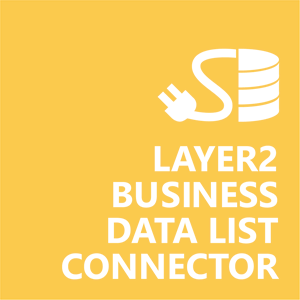Download a free trial of the Layer2 Business Data List Connector after a short registration.
Features & Benefits Layer2 Business Data LIst Connector
Keep your SharePoint on-premises portal in sync with data from 100+ external systems. Learn more about the features and benefits of the Layer2 Business Data List Connector for SharePoint below. Are you on SharePoint Online? Take a look here to find a similar tool for the Microsoft Cloud.
Close the gaps that still exist with SharePoint out-of-the-box external data integration
While Microsoft SharePoint Business Connectivity Services (BCS) allow exposing a small amount of external data records directly in the SharePoint user interface, there are still many gaps in functionality compared to native SharePoint lists. Think about search, lookups, metadata, mobile and offline access, forms, change notifications, or workflows on external data change. There are also issues with performance, especially in case of larger data sets and remote systems. BCS needs programming and it supports only a limited number of external systems.
Layer2 can completely close these gaps using a form-based, no-code, and easy to use SharePoint app to keep native SharePoint lists in sync with external data. All the great SharePoint list features are completely available for your external data sets. Forget about complexity: Simply create your SharePoint list and click "Connect to external data" in the SharePoint General List Settings...
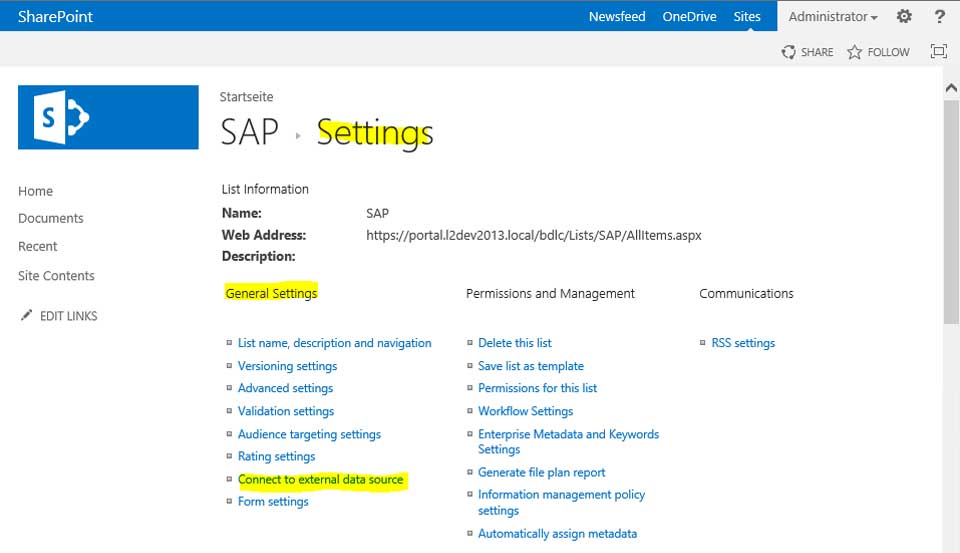
Select your data provider to connect
The connector comes with data providers for ODBC, OLEDB, ADO.NET, Text/CSV, XML, RSS, SharePoint (CSOM), Exchange, Web Services (OData, SOAP), and more. It also works with any vendor specific ADO.NET driver, such as for Microsoft Office Excel, Access, SQL databases, ERP/CRM systems, and more. If you can't find your data provider in the list, please install (as shown here for Oracle). You can add data providers directly from any system vendor, and also from highly specialized 3rd party vendors to integrate even more systems. Find the right data provider here. If you can't find, contact us to learn more.
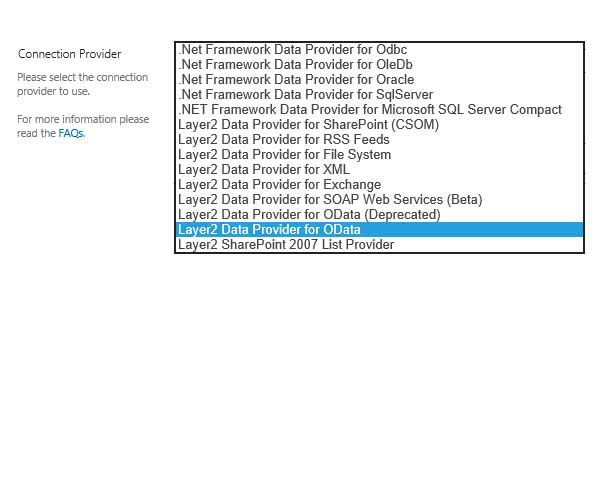
Enter your connection string
You don't need programming or additional tools to connect. No need to modify your external system. Just enter a connection string in the list settings that fits to your connected system. Usually it contains information about the target system, authentication methods, credentials, and vendor specific options. To find a connection string that fits to your requirements, take a look here. Important to know: Later on you can safely hide the connection string in the SharePoint Secure Store.
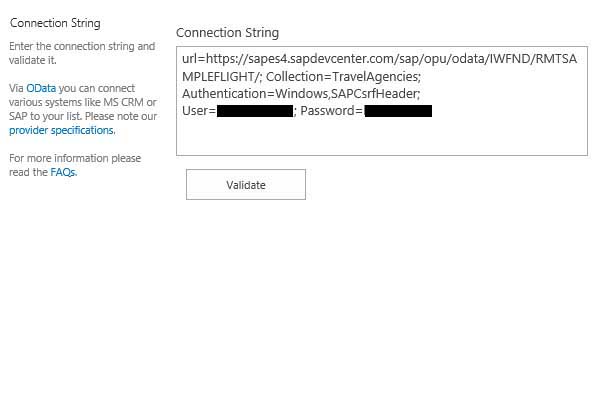
Select your external data set and key
You can query your data source using any query language your specific source system understands, such as SQL, XPath, OData, SOAP, and more. In case of databases you can also use stored procedures to return data sets. To connect to other SharePoint lists views can be used. In any case you will need one or more columns with unique values in your data set to setup the sync with SharePoint. You will find the column names using the data preview.
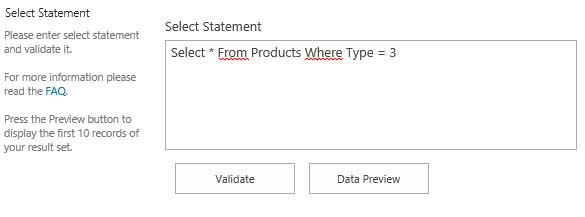
Create your list columns on-the-fly and auto-map to external data fields
You can create the list structure and columns with one click based on the source data query results. To customize regarding column name and data types, simply remove and re-add columns as you want. You can also map SharePoint columns and external fields manually, if required.
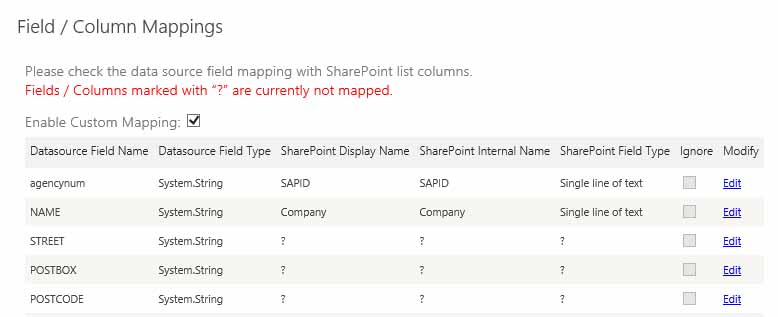
Keep your data in sync manually on-demand, automatically in background or via API
You can update your SharePoint list on-demand manually using the Action Menu or Ribbon button. You can automate using a link or the API. Typically updates are done completely in background using pre-configured timer jobs as scheduled. Data changes, such as inserts, updates, or deletes in the external systems are processed as set. You can even enable write-back of changes in the SharePoint list to your data source, if required.
Connect whatever you want
100+ typically used apps and systems are supported for SharePoint data synchronization, such as SQL databases via ADO.NET, ODBC, or OLEDB, CSV/XML files, ERP/CRM/CMS systems, Exchange, SharePoint itself (other list, site, site collection, tenant or installation), Exchange, Dynamics, Azure, OData or SOAP web services, and more. Find your specific system here. Can't find what you are looking for? Contact us to learn more.
Make use of ALL SharePoint list features
Think about native SharePoint lists as some kind of cache for your external data. It's automatically up-to-date and has all list features available, such as views, sorting, grouping, filters, calculated fields, versioning, search, lookups, metadata, mobile and offline access, Office integration (like Outlook, Access or Excel connectivity), forms, notifications, workflows. You can use all types of lists, for example a contact list for external address data, calendar events, tasks, or custom lists. 3rd party tools will definitely work with Layer2 - as the data is in native SharePoint lists.
Secure und easy administration
Centrally manage connections in the SharePoint Secure Store to keep your configuration data safe. Connection data can be stored encrypted. No need to open list settings for end-users. Protect list settings using SharePoint access rights. Use the SharePoint ULS for debugging, setup email notifications in case of possible issues.
Programming not required, but possible
You can make use of the connector's feature-packed API to completely create, connect and update your lists via C#, PowerShell or workflows. Please find comprehensive documentation and code samples in the distribution ZIP and FAQs.
The only boundary is your imagination
You can do with your external data whatever you can do with SharePoint lists: Pull data from external line-of-business systems and publish for collaboration and dashboards, make it available in the common, easy to use Office environment without any need for users to access the source systems. Save license costs for the source systems - your SharePoint users will never access it directly. Use SharePoint lists or forms as a front-end to acquire data into backend systems. Start notifications and workflows based on external data change.
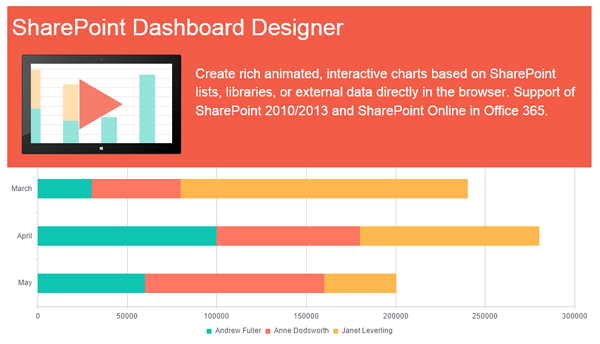
Available for all SharePoint editions and easy to migrate
The Layer2 Business Data List Connector is available for Microsoft SharePoint Server 2016, 2019 and Subscription Edition including the free SharePoint Foundation. It's easy to migrate and upgrade between the different versions. In case you are moving to the SharePoint Online cloud, a similar app is available with the Layer2 Cloud Connector.
Ready for the next steps?

